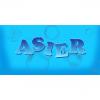Using 2 different textures on 1 character
I just joined a new group of developers,and first time a modeler asked me if he could use 2 different textures on characters. Body and head.
Is this common in game development?
So far everyone was using 1 texture covering the whole character.
Will this end up needing rework later on the road due to optimization? Or is it a minimal resource cost which doesn't really matter?
Thank you in advance :)
It depends on a lot of factors, but that might not be what you wanted to hear :)
In general, it's quite normal to have a mesh with submeshes, where the submesh has/ can have it's own Material (and texture), orientation etc.
You can do whatever you want. The only thing is that you need to now support game objects that contain 2 drawable meshes now. And if you have your own animation code, you would want both the head and body mesh to use the same skeleton/animation system that way they are both in sync during the game.
By default there isn't much reason not to just increase a single texture to be bigger and have them be 1 mesh and 1 texture.
Hello,
Its usual to use two textures there, one for each different object.
Thats because that way you will be able to have different characteristics (faces, lips and so) just by changing or even adding more specialized head textures instead of having it grouped with the body which can obviously incurr in a lot of texture parts redundancy.
Cheers
Will this end up needing rework later on the road due to optimization? Or is it a minimal resource cost which doesn't really matter?
It is generaly good to have source model in 1 texture, with very high resolution, and calibrated uv mapping (to recieve enough raster on surface).
The volatilization technique can get devided into multiple rasters later on, requeiring only mapping coordinates enclosed by mapping seems to get copied onto new quad in linear manner, and of course, new raster drawing again, but you can utilize the original raster enough of course as well.







